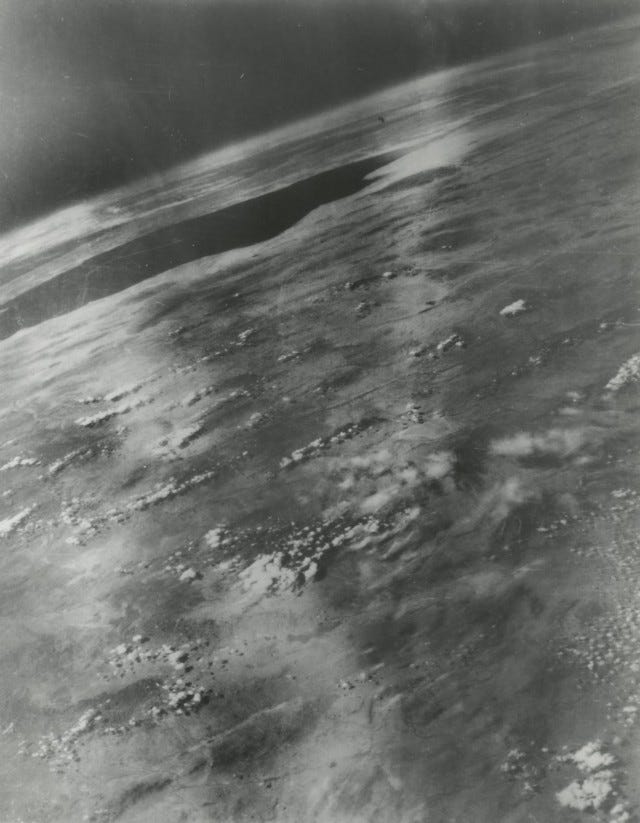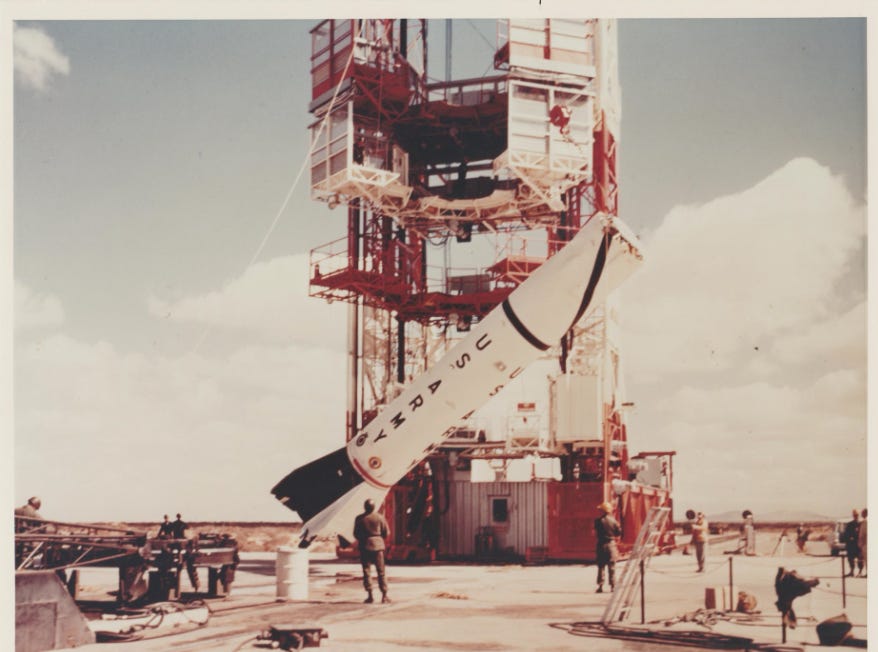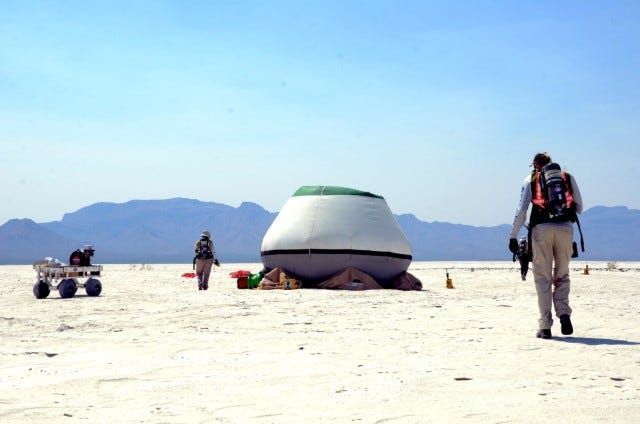The Army just turned 250 years old and has been the bedrock of aerospace since the 1940's
It all started in the desert of New Mexico
Under the U.S. Army Test and Evaluation Command, White Sands Missile Range (WSMR), also known as the "Birthplace of America's Missile and Space Activity," was officially established in 1941, initially as the Alamogordo Bombing and Gunnery Range, to train World War II bombing crews. Four years later, it became White Sands Proving Ground on July 9, 1945, and one week later, Oppenheimer conducted the historical testing of the first atomic bomb at Trinity Site on the range. The range proceeded soon after to produce the first photographs and film of the Earth's curvature from a V-2 rocket in space.

Since then, WSMR has continued to uphold the ATEC motto, "Truth in Testing," by planning, integrating, and conducting experiments, developmental testing, independent operational testing, and independent evaluations and assessments. Through testing, WSMR has ensured equipment is effective, suitable, survivable, and safe for service members and has remained steadfast in its commitment to being the trusted agent of the Soldier. With a focus on space activity, the range has supported some of the world's most advanced space exploration programs, including those alongside NASA. Notable milestones include the landing of the Space Shuttle Columbia in 1982 and the CST-100 Starliner spacecraft in 2022 and 2024 at White Sands Space Harbor, located within the range.

In 2022 and 2024, the CST-100 Starliner spacecraft successfully landed within three-tenths of a mile of its target landing site at White Sands Space Harbor (WSSH). This parachute-assisted landing of the capsule marked the end of the historical Orbital Flight Tests. It provided groundbreaking data to strengthen NASA's Commercial Crew Program, certifying the Starliner for future crewed landings.

At the exact location 40 years prior, WSMR welcomed its first-ever spacecraft landing. The Space Transportation System (STS)-3 Columbia landed on the Northrop Strip to conclude NASA's third space shuttle mission, which was crewed by NASA astronauts Jack Lousma and Gordon Fullerton. At the last minute, Columbia had to divert from its intended landing at Edwards Air Force Base in Southern California to WSMR due to bad weather compromising the landing site. With only five days' notice, over one thousand WSMR employees had collected data from the Alamo and Atom Peak's telemetry systems, as well as Tularosa Peak's microwave link. With a fast turnaround time, they sent this data to the Spaceflight Tracking and Data Network in preparation for Columbia's arrival. Two months after the historic landing, President Ronald Reagan signed legislation renaming the Northrop Strip area as White Sands Space Harbor.

Given that WSMR is the birthplace of America's missile and space activity, this was not the testing facility's first time entertaining ideas of working with spacecraft. WSMR staff crafted a report 61 years ago, titled "Proposal For NASA-DOD Launch Site On National Lunar Program," in response to a request from NASA in June 1961 to explore the possibility of launching Project Apollo from the range. WSMR did not win the proposal due to logistical issues of transporting boosters overland to southern New Mexico in preparation for the launch. There were also concerns about problems that would arise from dropping those boosters over Texas and Louisiana during its eastbound journey from WSMR. However, it did set the precedent for WSMR's capacity to host astronaut training for spacecraft landings in the future. It also jump-started the establishment of a laboratory on the post to test materials used inside capsules and shuttles. These efforts created an atmosphere in which WSMR had the capacity to do great things with spacecraft. With encouragement and excitement, local politicians and business leaders fully supported WSMR's efforts to work with spacecraft in the future.

As a significant step towards this future, in 1966, NASA tested the Planetary Entry Parachute Program (PEPP) aeroshell on WSMR, created to test parachutes for the Voyager Mars landing program. The PEPP was carried under a high-altitude balloon from Roswell, New Mexico. Once it entered WSMR's airspace, it was able to ascend to the upper levels of the atmosphere, where the parachutes could be tested in incredibly thin air.
Just a few years later, the Northrop Corporation built the Northrop Strip on WSMR for drone launches and landings, which was later turned over to NASA for shuttle training and landings. During that time, 85 percent of NASA's shuttle pilot landing training was done on the strip, testing against environmental elements such as wind angles, wind speeds, and nighttime landings.

A timeline of White Sand Missile Range's space activity:
1946: Sounding rockets launched to explore the upper atmosphere, conducted low-gravity experiments, and the first photographs and film of the Earth's curvature were captured from a V-2 rocket in space.
1961: NASA proposal for both Apollo Saturn rocket launches and capsule recoveries
1963: Tests of the Apollo Launch Escape System
1971: Apollo 15 moon suit test in the WSMR dust chamber
1972: Four tests of the Viking Mars parachute system
1976: NASA uses the WSMR Northrop Strip runways for shuttle pilot training
1982: Columbia lands on WSMR Northup Strip
1993: On its 12th flight, the McDonnell Douglas Delta Clipper lands in the same location from which it was launched
2010: NASA conducts an Orion pad abort test
2019: Boeing's Starliner lands on the same lakebed proposed for Apollo use and then used by the Space Shuttle system
2022: Boeing's Starliner lands again at WSMR's Space Harbor
2024: Boeing's second Starliner lands again at WSMR's Space Harbor
Following the successful CST-100 Starliner landing at WSMR, NASA aims to take a significant leap forward by adding human spaceflight missions to the International Space Station. White Sands Space Harbor will continue to provide a safe landing area and testing ground for their brave astronauts and the countless hardworking civilian engineers, physicists, and scientists who make these missions possible.
Photo credits:
Timeline graph: Anne Marie Chadima
Photo 1: One of the first photos of the curvature of the Earth from a V2 Rocket in 1946, Image Credit: WSMR Museum Archives
Photo 2: U.S. Army Redstone Rocket carried by crane for assembly prior to test in 1959. Image Credit: WSMR Museum Archives
Photo 3: The landing site for the CST-100 Starliner at White Sands Space Harbor in 2022. Image Credit: Anne Marie Chadima
Photo 4: The 1982 landing of Columbia at White Sands Space Harbor. NASA moved 350 personnel and two trains of 21 and 23 cars each with this equipment from Edwards to prepare to load the shuttle. They accomplished this in only 7 days. Image Credit: WSMR Museum Archives
Photo 5: Three WSMR personnel obtain and transmit data from White Sands Project Mercury Office to NASA’s Goddard Space Flight Center in Greenbelt, Maryland. From left to right are Virginia Scott, Ida Brown, and Edmund Pierce. Image Credit: WSMR Museum Archives
Photo 6: The first man at White Sands Missile Range to contact the Gemini capsule as it rises over the horizon is Roger M. Hansen, shown here operating the acquisition aide controls. The acquisition aide furnishes information for pointing the R-113 radar, which tracks the spacecraft as it flies in orbit near White Sands. Image Credit: WSMR Museum Archives
Keep learning!
Want to learn how communications strategists are building the largest aerospace companies of our lifetime? Start listening now to my recent podcast episode where I interview Brianna Jackson, former comms strategist for American Airlines and Boeing:




